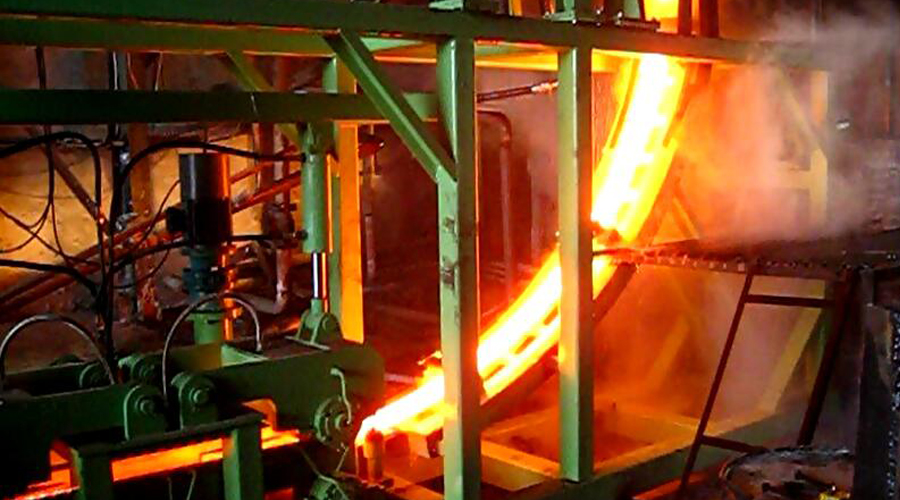Billet manufacturing is an integral part of the steel production process and is the basis for a variety of downstream applications. Continuous casting machine revolutionized steel billet manufacturing by providing an efficient and economical method of producing high-quality steel billets. This article explores the process of manufacturing billets using continuous casters and highlights their advantages over traditional methods.
Characteristics Of Steel Billet Manufacturing
Traditionally, steel billets are produced through ingot casting, a labor-intensive and time-consuming process involving multiple steps and resulting in significant material waste. However, with the advent of continuous casters, the industry underwent a significant shift in efficiency and productivity.
Continuous casting machines are at the forefront of modern billet manufacturing, providing a seamless, continuous process that minimizes material waste and improves product quality. The process begins by pouring molten metal into a water-cooled copper mold, which acts as a containment vessel. The mold is specifically designed to shape molten metal into a solid blank, ensuring uniformity and consistent dimensions.
As the molten metal begins to solidify, a series of rollers and water jets continuously pull it through the mold. This controlled movement ensures a constant flow of material and prevents any irregularities from forming.
The solidified billet is then guided through a series of cooling zones, where water sprays further aid the solidification process, ensuring that the billet is fully solidified by the time it reaches the end of the machine.
Advantages Of Continuous Casting Machine
Continuous casters offer many advantages. First, the continuous process eliminates intermediate steps such as ingot casting and reheating, thereby reducing energy consumption and production costs. In addition, the continuous casting method allows for higher productivity, allowing manufacturers to meet growing demand in a timely manner.
In addition, CCM can better control the internal structure of the billet, thereby improving mechanical properties and improving product quality. The uniform cooling process ensures a consistent grain structure throughout the blank, reducing the risk of defects and increasing its overall strength and durability. This is particularly important for industries that further process billet making into various components.
Additionally, continuous casters enable manufacturers to produce billets, blooms, billets, slabs, round billets, and more in a variety of sizes and shapes, providing flexibility and customization options to meet specific customer requirements. This versatility is key to ensuring that the billet can be seamlessly integrated into downstream manufacturing processes without any additional modifications or waste.
In summary, continuous caster billet manufacturing has revolutionized the billet making industry by streamlining the production process, reducing material waste, and improving product quality. Its continuously controlled casting method offers numerous advantages over traditional ingot casting, making it the first choice of manufacturers worldwide.
As the demand for high-quality steel billets continues to rise, CCM is expected to play an increasingly important role in meeting these requirements efficiently and effectively.

